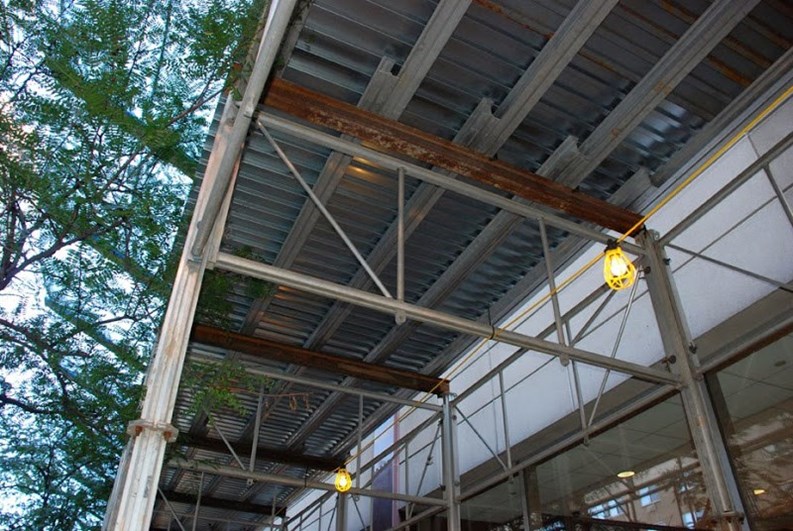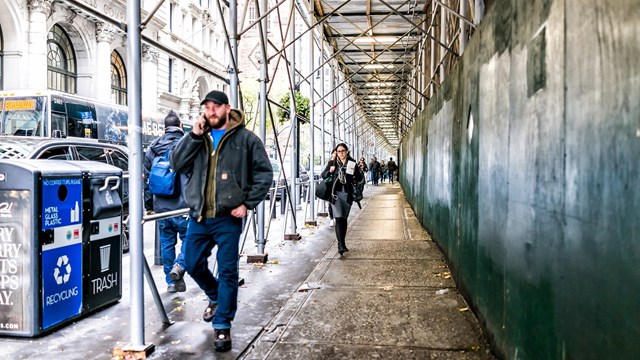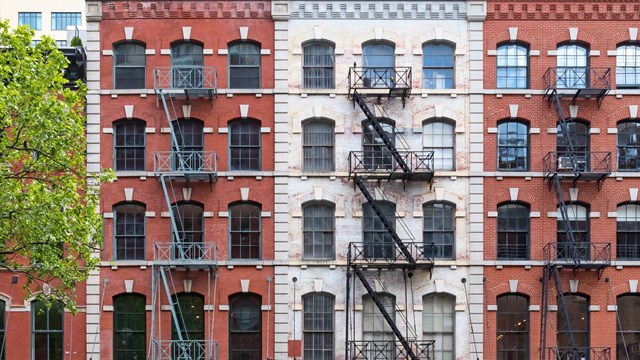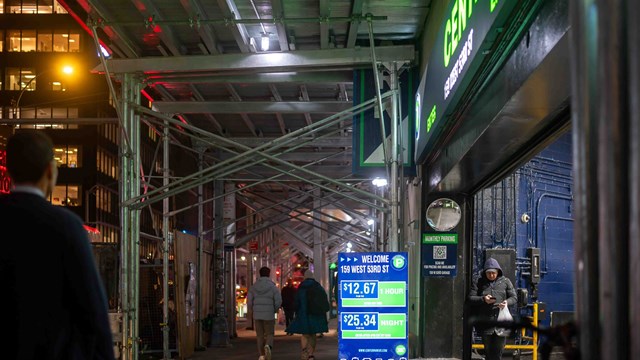In a flurry of activity last December, many local news organizations, including The New York Times, Crains, and CBS local news ran stories about the overwhelming number of scaffolds surrounding buildings in all five boroughs of New York City. The structures were described as a menace, providing sleeping accommodations for the homeless, cover for criminal activity, and a breeding ground for rats and vermin in the garbage that collects under them. While this may all be true, a bigger question poses itself: Why are these scaffolds there to begin with?
Response to Tragedy
Scaffolding, also known as sidewalk sheds or girdles were the result of a tragedy that dates back to 1979. That year, a young woman was killed on West 111th street and Broadway on the Upper West Side when a piece of terracotta fell from the façade of a building and struck her. The result was Local Law 10, which required front façade inspections of all buildings over 40 feet in height every five years. This law was replaced in 1998 by Local Law 11, when another sidewalk death from falling debris prompted lawmakers to extend the inspections to entire structures.
According to Wayne Bellet of Bellet Construction, a specialist in exterior building repair, is that “Every five years, building owners must engage a construction engineer to inspect their properties under Local Law 11. The engineer will recommend what work needs to be done.” Often the work will require a sidewalk shed, which will be erected to protect pedestrians during the progress of the work, and also before the work commences, since a damaged piece of masonry could well come tumbling down before work crews are able to repair it. “After the work has been completed,” says Bellet, “the engineer will send a report to the Department of Buildings (DOB), and then an inspector from the city will come to clear the work. It is only after the work has been completed that the scaffolding is removed.”
Sounds simple...but it’s not. Bellet goes on to explain that in many cases, the Landmarks Commission has a say in the process, and they can be notoriously slow – both in approving the work to be done and confirming that the job has been completed properly. This can slow down the process substantially. Another problem is a loophole in the law that permits a landlord to hold off from completing the repair work if they can’t afford to do it. In some cases, the landlord can put a protective girdle around the building, re-apply each year for the permit to have a street shed, and wait till the next inspection five years later to even begin work on the original problem.
Refining the Time-Frame
Councilman Ben Kallos, who represents Manhattan's Upper East Side, introduced a bill to the City Council in December 2016 to make some changes to this process. Basically – and most importantly – it calls for required work to be completed in six months’ time so that scaffolding can be removed promptly, eliminating the safety concerns mentioned above. If the repairs aren’t completed in that time frame, the city would finish the work and charge the owner. Councilman Kellos’s office reports that they are waiting for the bill to get a hearing, after which it will be presented to the council for a full vote.
“If it affects public safety, a landlord is going to put it up,” says Bellet, speaking of sidewalk sheds. “It’s about public safety. I want my kids, myself, my friends and family and everyone else to be safe. The sidewalk shed is solely about safety.”










Leave a Comment